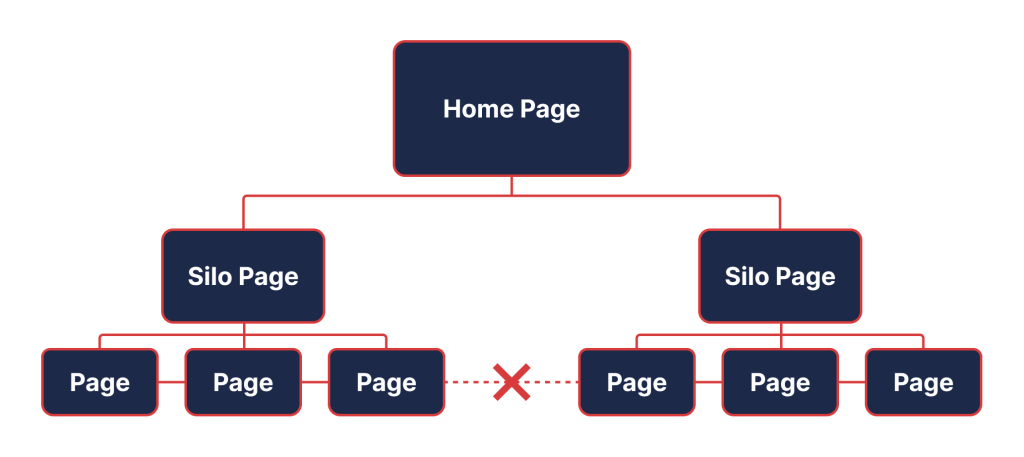Silos are a website architecture that groups pages into self-contained sections.
Pages within silos can be interlinked, but do not link to pages in other silos.

Because pages within a silo only link to each other and not to other silos, they have improved topical relevance.
This creates a well-organized hierarchy of pages that are great for SEO:
- improved search engine crawling and indexing
- pages in a silo have well-defined topical relevance
- simplified website navigation
Even though silos sound favorable for SEO, the lack of interlinking is actually a huge restriction.
Silos and Internal Linking
As website owners one of our main goals is to keep visitors on our site for as long as possible.
Because different silos don’t interlink with each other, visitors have fewer chances to discover other content on our website.
Not only is this a loss of internal traffic, but Google themselves recommend webmasters to build naturally flowing links for improved user experience.
Therefore, building silos means you’ll be losing internal traffic in exchange for a boost in technical SEO.
Depending on what kind of website you manage, this could be a worthwhile trade-off.
Use Cases for Silos
E-commerce stores and business pages are perfect for silo SEO.
E-com sites silo their products in distinct collections or categories, making it easier for users navigate and shop. This is especially helpful for larger brands with many products, collections and categories.

Business pages often build silo pages for pricing or FAQs to support their services.

Get the Best of Both Worlds
Although silos make sense for e-com and business websites, they won’t work for something like a blog, where topic clusters are preferred.
Many e-com websites and business pages have their own blog; in this case, you can adapt a silo structure for your product/service pages, and use a topic cluster for your blog.
